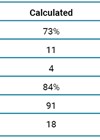Myasthenia gravis (MG) is an autoimmune disease that leads to impaired neuromuscular transmission. Solely ocular manifestations of MG (OMG) occur in 15-50% of cases, most frequently in the form of fluctuating ptosis and diplopia. Most cases of OMG convert later to generalised MG (GMG). Assaying acetylcholine receptor antibodies (AchRA) has been used to diagnose MG, but the reported sensitivity in OMG is lower (50%) than in GMG. This paper reports the clinical course and the diagnostic yield of assaying AchRA in a Kuwaiti cohort of patients with OMG. A retrospective case note review was undertaken for 47 patients diagnosed with OMG who were tested for AchRA. Ancillary tests included the ice test, single-fibre electromyography (SFMEG), and repetitive nerve stimulation electromyography (RNS). Progression to GMG occurred in 51% of OMG patients with a mean time to progression of 12.1 months (range four to 20 months). AchRAs were positive in 46 of 47 cases (98%), while SFEMG was positive in 31 of 34 cases (91.1%). Older age (44.25 years versus 38 years, p < .05) and higher AchRA titre (2.0 nmol/L versus 1.27 nmol/L, p < .05) were significantly associated with conversion to GMG. The review found a high rate of AchRA seropositivity in relatively younger subjects of OMG. Higher AchRA titres and older age were associated with conversion to GMG, usually within the first two years.




